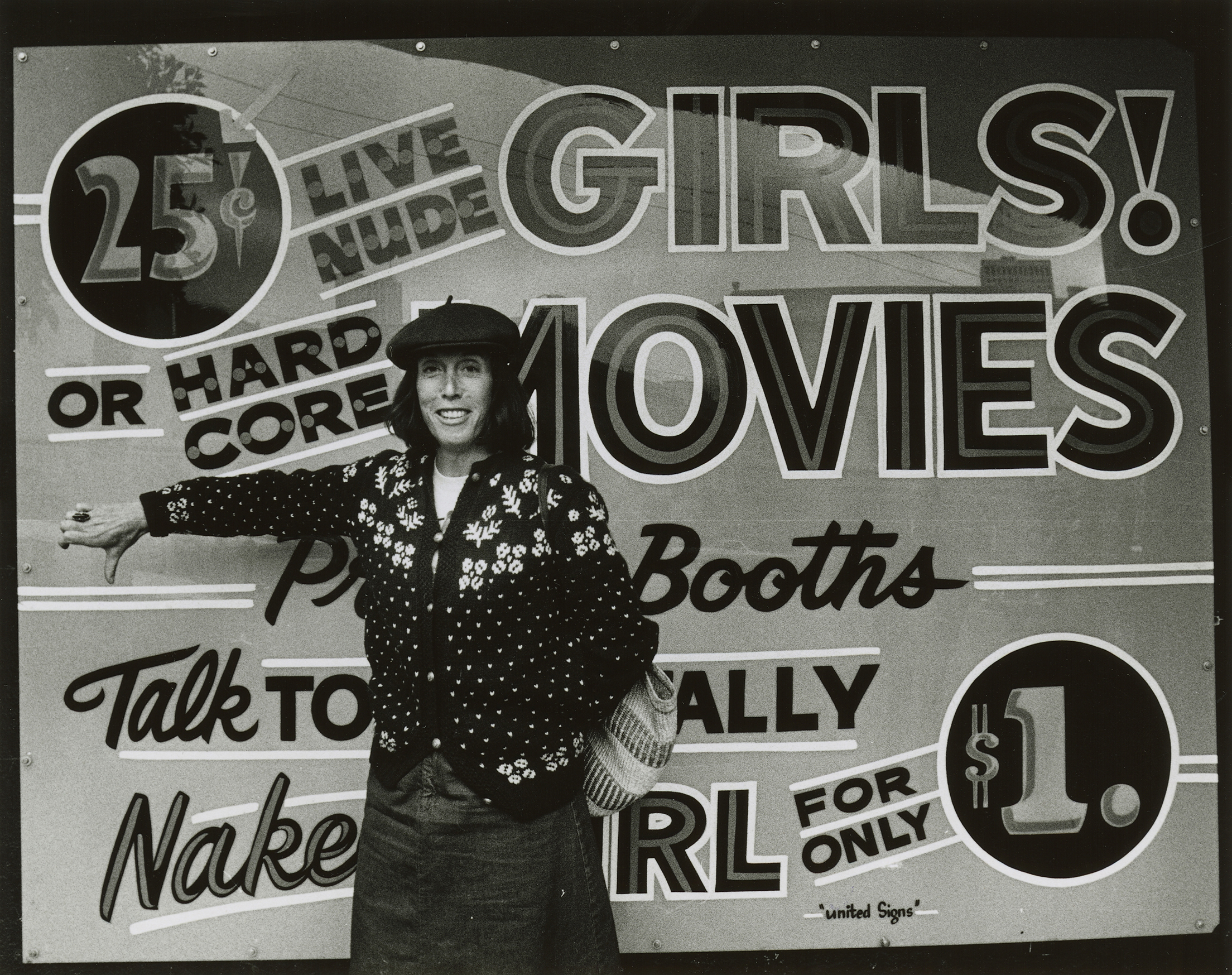With Valentine’s Day coming up, San Francisco has had sex on its mind—but not in the way you might think. With barricades recently installed along Capp Street to deter allegedly rampant prostitution, some Mission residents have been calling to designate a red-light district where those in the industry could ply their trades undisturbed. And with the Board of Supervisors poised to consider decriminalization of sex work, the stage is set for a deeper discussion of sex work and its place in the modern city.
San Francisco has always had pioneers in the sex industry—a local, in fact, coined the term itself. And that is following up on a long history of a more forward-thinking approach to sex work.
Known as the “Scarlot Harlot,” red-headed Carol Leigh is credited with reframing what used to be called “whoring” as the now-ubiquitous idea of “sex work.” She argued that forms of seduction like stripping and prostitution were not sins that should be criminalized but jobs people undertook to support their families.
Leigh used the power of the pen to command respect for this perspective. She authored a one-woman play advancing the term titled The Adventures of Scarlet Harlot and documented her (pleasurable) pursuits as a sex worker in her memoir, Unrepentant Whore: The Collected Works of Scarlot Harlot.
Margo St. James also fought for the rights of those working in the sex industry. The San Franciscan formed the COYOTE (Call Off Your Old Tired Ethics) organization to help unionize sex workers. A proud prostitute and feminist, she also began the St. James Infirmary to support the health care needs of those working in the industry.
The Condor Club, billed as the world’s first topless bar and—amazingly enough—a Legacy Business only since last fall, employed the world’s first topless dancer—Carol Doda, who ended up overturning the indecency charges levied against her for her performance. The landmark case established a precedent for topless dancing everywhere, and stole business from the (much more restrained) exotic dance performances happening across Golden Era Chinatown.
Prostitutes historically commanded a kind of respect in San Francisco not seen elsewhere. Women were so rare in the early Gold Rush days that all women, including sex workers, were often treated with deference. Often amassing small fortunes by practicing the world’s oldest profession, prostitutes in early San Francisco wielded power and influence not seen elsewhere.
And the women in those days wielded power and influence often not seen elsewhere—one French courtesan was said to amass $50,000 in her first year in the city.
The famed Barbary Coast—renowned the world over for its debauchery and sin—accepted prostitution as commonplace. Popular parlor houses would have their own specialities, everything from organ recitals to erotic exhibitions and what was probably the very first “direct mail advertising,” when one brothel owner sent out cards of naked girls to lure customers on a curated mailing list.
And the San Francisco Examiner, with its barely disguised advertisements for prostitution at the time, had a telling nickname: “The Whore’s Daily Guide and Handy Compendium.”
In the Bay Area, we’re used to being ahead of the curve—the acceptance of sex work, it seems, is no exception.
